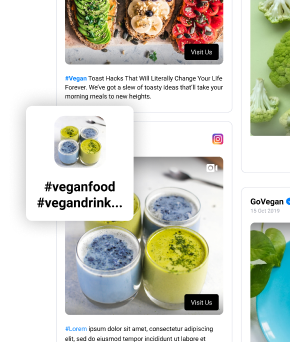You might see a lovely hoodie on your Instagram feed, tap ‘Shop now’ and complete the purchase right there in the app in just a few clicks.
Or, you could spot a well-priced hand cream as you are scrolling through your Facebook feed, click ‘Buy’ and complete the purchase easily. Once you are done, you can continue to enjoy your Facebook experience by seeing pictures from your friends, without missing a beat.
This is what social commerce is all about: Providing marketers and influencers with various shopping opportunities right on the digital platforms that their audiences use the most.
And if you are one of these profiles, you should better be taking advantage because this seems to be the new online shopping era.
The numbers don’t lie:
30% of online shoppers are likely to buy directly from a social media network like Facebook, Pinterest, Instagram, LinkedIn, Twitter, or Snapchat.
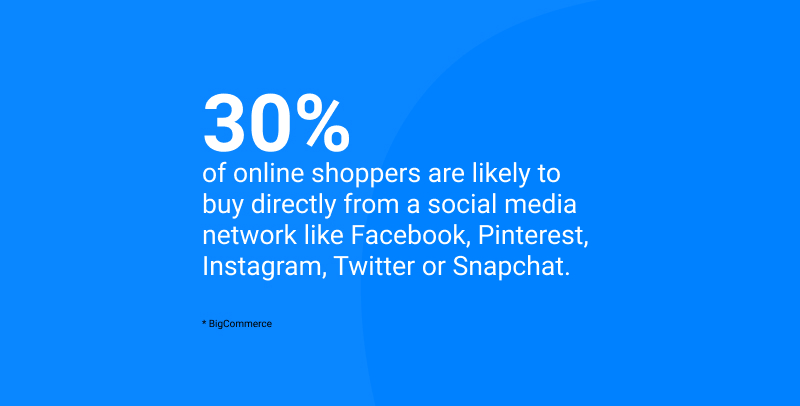
It’s almost impossible to predict the future, mainly for something as fast-changing as social media. But if you notice the latest shopping trends, you will clearly see the pattern.
Social commerce is confirming to be one of the hottest trends in social media today, and it seems to gain an even more significant impact in 2021.
We created this guide to help you better understand the benefits of social commerce, learn how to improve your sales by using the power of social media, and much more.
Let’s dive in!
What is social commerce?
First thing first.
Social commerce is the process of selling and buying products directly on social media.
Simply put, this brings e-commerce functionality directly into social media platforms.
This means that the entire shopping experience, starting from product discovery, research, and checkout process, happens within the native social media platform.
Although the term ‘social commerce’ was introduced by Yahoo! in November 2005, we witnessed it’s bloom just recently (pandemic was a huge factor, we must agree).
Social media platforms that are owning the social commerce space are Instagram, Facebook, Twitter, and Pinterest.
In order to escape the confusion…
What is the difference between social commerce and e-commerce?
Social commerce is not e-commerce! Social commerce allows the customer to make a purchase within their social media experience.
On the other hand, e-commerce refers to a shopping experience via an e-commerce website or a dedicated branded app.
In simple terms, the e-commerce site is considered a shop created on platforms such as Shopify, BigCommerce, Amazon, or similar. Usually, you must be a registered company with your own Terms of service and use these platforms’ payment processing.
What is the difference between social commerce and social media marketing?
While social commerce is the social selling of products directly within social media platforms, social media marketing drives referral traffic from social media sites to a website or online store. Thus, the entire shopping experience happens when the customer will leave the social network.
If everything is clear now, let’s see the benefits that come along with the package when using social commerce.
Benefits of using social commerce for your businesses
If you are still wondering if social commerce will work for your business, here are the leading benefits that will encourage you to give it a chance:
Consistent audience growth exposed to your products
Every single day, thousands of people are joining social media networks. This means that you get to promote your products and services to a broader audience in business terms.
Optimization of the buying process
I hate to repeat myself, but this is crucial – with social commerce, the entire social shopping experience happens without the customer ever leaving the social media platform.
See it, click it, buy it. It’s a faster and straightforward way to sell your goods and services and optimized for better conversion rates. And customers love it!
Improved search engine ranking
Engagement on social media can bring more than just direct transactions. Sharing links to content that direct users to your website is an excellent way to drive traffic from social media users.
Thus, the more social engagement and direct transactions you have, the more traffic to your website you will receive. As a result, it will eventually influence your website’s lower bounce rate and improve your ranking on search engine results.
Powerful branding opportunity
By showing up in your followers’ updates feed regularly, you participate in a powerful branding opportunity. It will encourage them to not only engage with your business but use social media as an efficient customer service channel where they can reach you.
Social media word-of-mouth in the form of sharing and reposting will land you a hand with audience building. It comes in combination with more active users around your brand and increased engagement.
Improved customer loyalty and retention
Alongside aiming to sell and promote your products or services, you are also building good relationships with people that deepen their trust and loyalty. This creates happy customers who will likely remain clients that make repeated purchases.
The place where Millennials and Gen Z like to shop
If your target demographic is in the 18-to-34 age range, you better use social commerce. Your target audience is already online and looking to shop while they scroll.
It makes it easier to measure business metrics from social
As far as you know, most social platforms have built-in metrics for impressions, engagements, reach, and website clicks count.
Including your total numbers of fans/followers, likes, and the overall interactions will make it simpler to determine your ROI.
Best social commerce platforms
Currently, there are only a few social platforms that offer social commerce experience.
Here are the top social commerce platforms available, along with some instructions on how to get started.
Instagram shopping options

Instagram Shops enable users to buy products featured in your photos, stories, and videos from the app.
60% of people discover new products on Instagram. Why not give them what they’re looking for?
Here are the current shopping routes that Instagram provides:
- Shopping in Instagram Feed – brands and creators can tag products per image or carousel and allow followers with a simple tap to buy these products from your online shop.
- Shopping in the ‘Explore’ tab – users can explore shoppable posts by navigating to this tab.
- Shopping in Stories – businesses and creators can tag their products in a Story.
- Product stickers – Instagram users can buy your products by clicking on a sticker directly on your Stories.
- IGTV Shopping – creators can tag shoppable products directly in their IGTV videos.
- Instagram Reels – businesses and creators can tag their products when they create Reels.
Please note that to get your Instagram Shop set up, you need to:
To learn more about all the shopping options on Instagram and how you can get started, check out the step-by-step guide we have created for you.
Recently we witnessed a considerable amount of new Instagram updates, so make sure to keep your eyes open for the upcoming features that may benefit your businesses.
Facebook shopping options
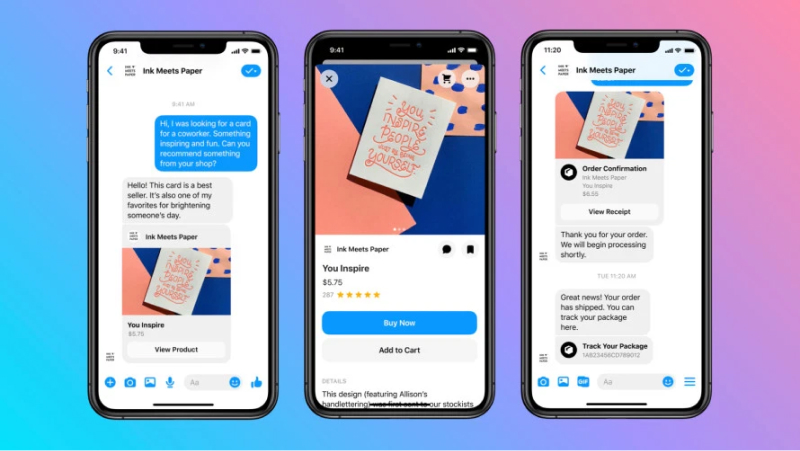
You use your Facebook Business Page to share company news, connect with your current and potential customers, and brag about your latest products. Why not set up a Facebook Shop to sell a few things while you are here?
Facebook Shops is a mobile-first shopping experience where businesses can quickly create an online store on Facebook for free.
It’s straightforward to set it up, and the shop is fully customizable. You just need to select which collections or goods to feature by importing an existing catalog of products from your website or create one from scratch.
In Facebook Shops, you can connect with customers through WhatsApp, Messenger, or Instagram Direct to respond to their questions and provide customer support.
Check out our complete guide on how to get started with Facebook Shops.
Pinterest shopping options
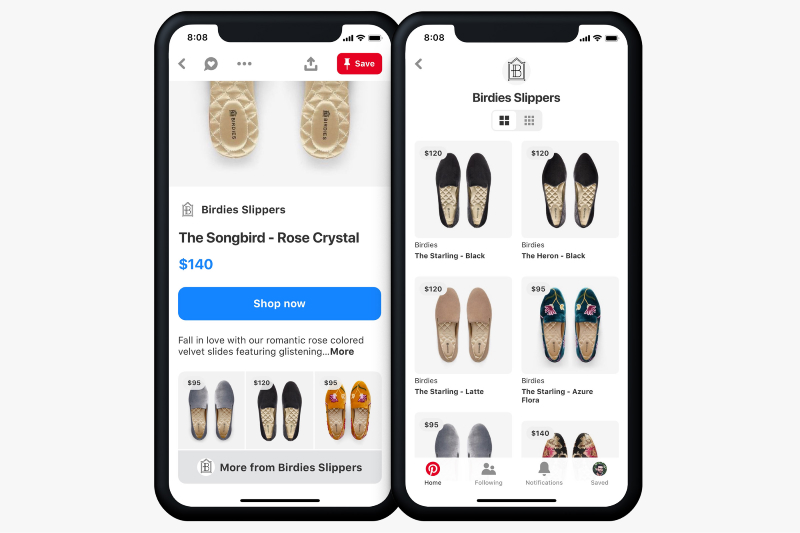
People have always used Pinterest for shopping inspiration, although the platform doesn’t strictly offer a complete social commerce experience.
However, for business accounts, Pinterest has the option to create ‘Product Pins’ with up-to-date pricing and stock information (formerly known as Buyable Pins), that are shown in your brand’s Pinterest Shop.
Pinterest also has some compelling social commerce features for businesses, such as catalogs, that allow you to upload an entire product catalog to Pinterest and Shop the Look feature that highlights the items in a photo available for purchase.
So next time a user finds something they would like to buy and see a shopping tag icon attached to it, they can just click on the retailer’s website to complete their purchase.
Keeping in mind that 89% of Pinterest users are there for shopping inspiration, you might consider giving this app a chance.
To learn more about how you can level up your marketing game using Pinterest, check out our Pinterest Story Pins guide.
Twitter shopping options
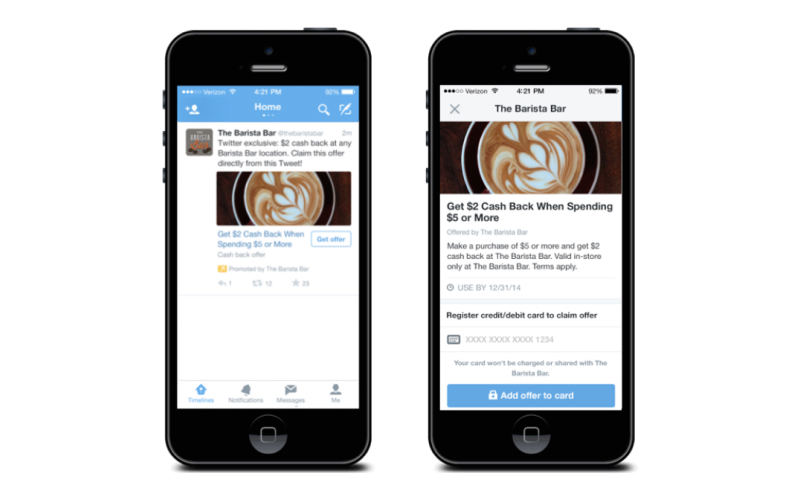
During the last years, Twitter followed the example of other social platforms and invested in adding commerce solutions that connect customers and brands.
They made it possible to buy products with Twitter Offers, enabling advertisers to create card-linked promotions, share them directly with Twitter users, or shop collections of products without even leaving the Twitter app.
But as the interest (and revenue) grows, especially in pandemic times, we will likely witness more of these social media brands integrating the “shop now” options.
We can’t wait to see which social platform is next. 🙂
Social commerce best practices you can start using today
Until now, you probably understand that social commerce has already come an incredibly long way.
To help you get your social commerce strategy off to the very best start, we are listing a couple of marketing strategies to get the most out of your social media channels.
1. Promote your upcoming products
The apparel retailer Zara is a good example of how you can increase the demand for your products even before they land on the market.

2. Merge your social commerce with your e-commerce platform
Ecommerce platforms aren’t a social commerce tool, but they enable you to integrate with multiple sales channels and manage your omnichannel strategy more effectively.
3. Sell your low-cost products primarily
Online shoppers are on social media to enjoy themselves. They are not considering expensive products. Thus, it’s more likely to make the sale if you focus on low-cost products.
No one will buy a $500 bag on impulse, especially if their first interaction with your brand is an Instagram ad.
4. Collect users email addresses
It’s easier to do upselling after you have sold them something less expensive. Once you’ve made that first sale, grab their email address to utilize in an email marketing strategy.
You need to nurture the relationship and build trust before you can ask for the big sale, right? And once they trust you, send them an email promoting your higher-priced products.
5. Stimulate and generate social proof
Social proof is becoming a crucial part of every digital marketing strategy. Especially during the pandemic, most buyers, before purchasing something, read reviews or ask about opinions for brands from other people on social media.
To generate social proof, you can usually monitor people mentioning your brand through hashtags or direct mentions. And if you want to stimulate people to share more about their experiences with your brand, you can provide them incentives such as coupon codes or discounts.
With tools like EmbedFeed, you can add shoppable CTA buttons on every post you have. Once clicked, it will redirect your users to the desired link or product page.
This is how your shoppable feed will look like when embedded on your website, depending on the layout you choose:
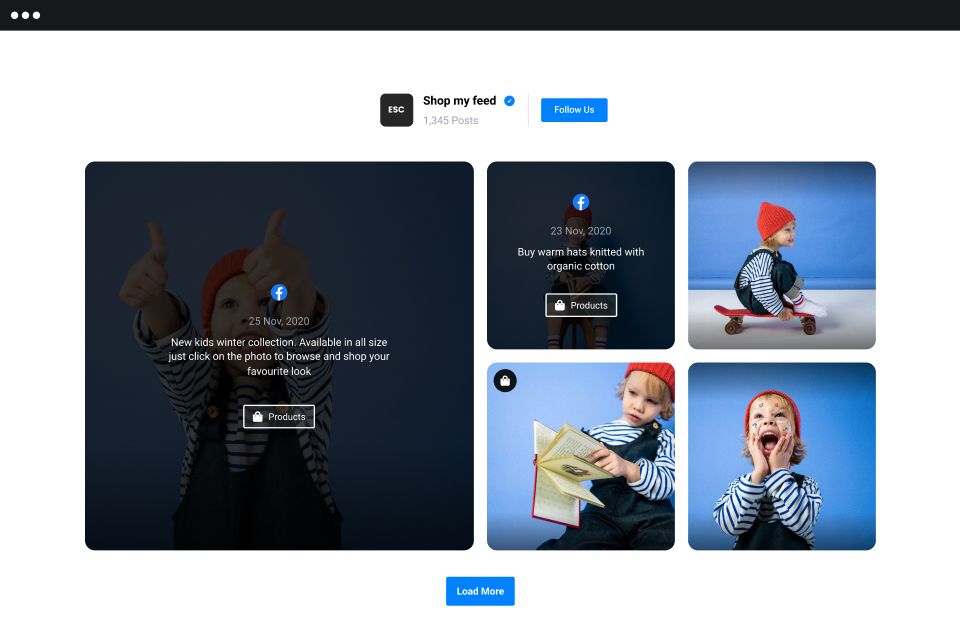
Please note that these buttons are completely customizable. You can add a custom CSS and do a complete makeover of the style and alignment.
Wrap up
The amount of time people, especially younger generations, spend on social media apps has positioned social commerce as the indisputable market breakout trend for e-commerce in 2021. It’s more than expectable that the percentage of online shoppers will grow in 2021, especially in pandemic times.
Make sure to catch this wave and experience a boost in conversions by meeting customers where they enjoy being – scrolling down through their favorite social media apps.
The #1 Social media aggregator
Try EmbedFeed and embed Instagram, Facebook, Youtube, or TikTok feeds on any website, like a PRO.
7 days free trial · Easy setup · Cancel any time
